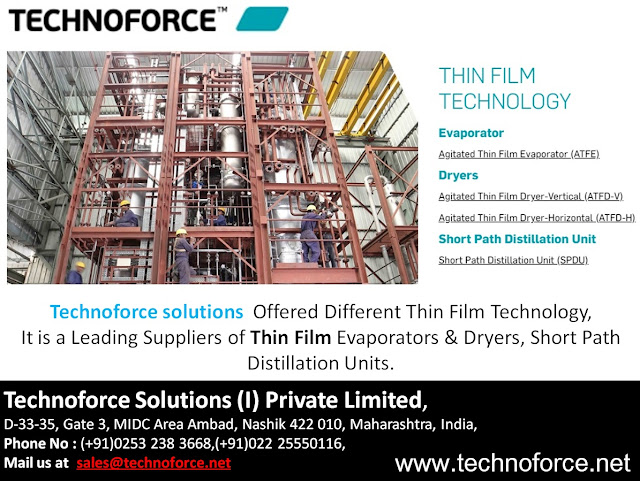Use reactive extraction to improve change -Technoforce Solutions
Use reactive extraction to improve change -Technoforce
Solutions
Reactive extraction is a division
procedure utilizing the reaction among extractants and the materials
ex-tracted. The extractant in the natural stage responds with the material in
the fluid stage and the reaction complexes formed are then solubilized in the
natural stage. Extractants, for example, hydrocarbon, phosphorous, and
aliphatic amine extractants are mostly utilized in the reactive extraction of
carboxylic acids.
Fluid
extraction, filtering (strong extraction), absorption (gas extraction) and
extractive refining share for all intents and purpose the utilization of a
dissolvable which accomplishes the partition. As per this, dissolvable
recuperation in a consistent dissolvable circuit is essential. Typically fluid
extraction works at surrounding or somewhat higher temperatures and
reextraction might be cultivated by a back wash or thermal strip. The exchange
of a disintegrated compound (solute) starting with one stage then onto the next
might be upgraded while admixing "salting out" operators or all the
more specifically accomplished by utilizing "reacting" mixes broke
down in the dissolvable stage. The utilization of fluid particle exchangers,
diluted in a dissolvable, has offered ascend to new methodologies in the field
of hydrometallurgy, in the substance and bio-concoction industry and in natural
applications.
The
principle distinction between reactive
extraction
and dissolvable extraction is the reaction between the extractant and the
solute in the organic stage. Aliphatic amines and phosphoric solvents are
proposed as effective extractants by prior scientists. While extractants assume
the significant job in the reaction, diluents likewise significantly affect the
degree of extraction. Nonaromatic, water immiscible, and polar solvents with
middle of the molecular loads and high boiling points are regularly favored for
the extraction to have high dispersion and selectivity. The solvents (diluents)
control the physical properties (thickness, density, surface pressure, and so
on.) of the dissolvable stage and furthermore influence the strength of the
intricate structure formed between the solute and the extractant.
Advantages
· heat transfer is to be improved during the reaction
· Product-catalyst separation can be influenced by a liquid-liquid separation.
· better control of pH in the bioreactor
· effective at high centralization of substrate in the extractive fermentation
· phase equilibrium can be positively influenced
· product(s) undergoes subsequent undesired reactions in reaction phase
· the acid can be reextracted and the dissolvable can be reused
· reaction products to be isolated are immiscible with the reaction phase
· better recovery of corrosive with higher product virtue
Contact
Technoforce Solutions (I) Private
Limited,
Mail us at:sales@technoforce.net
Visit the Following Link->>
https://www.technoforce.net



Comments
Post a Comment